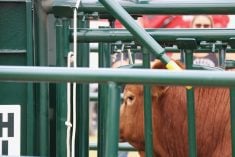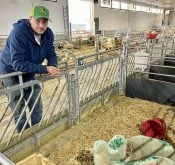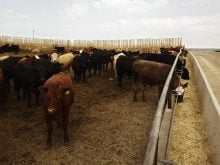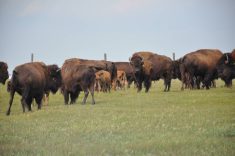A pile of bricks can be built into different structures.
That situation confounds scientists studying prion-related diseases such as Creutzfeld-Jakob Disease, scrapie, BSE and chronic wasting disease.
“There are quite a number of methods to differentiate prion strains,” said researcher Adriano Aguzzi of the University of Zurich in Switzerland.
But scientists still don’t know what makes up the aberrant prions leading to disease in mammals and humans, admitted a group of international scientists gathered in Calgary for the annual meeting of PrioNet, a network of researchers studying prion diseases.
Read Also
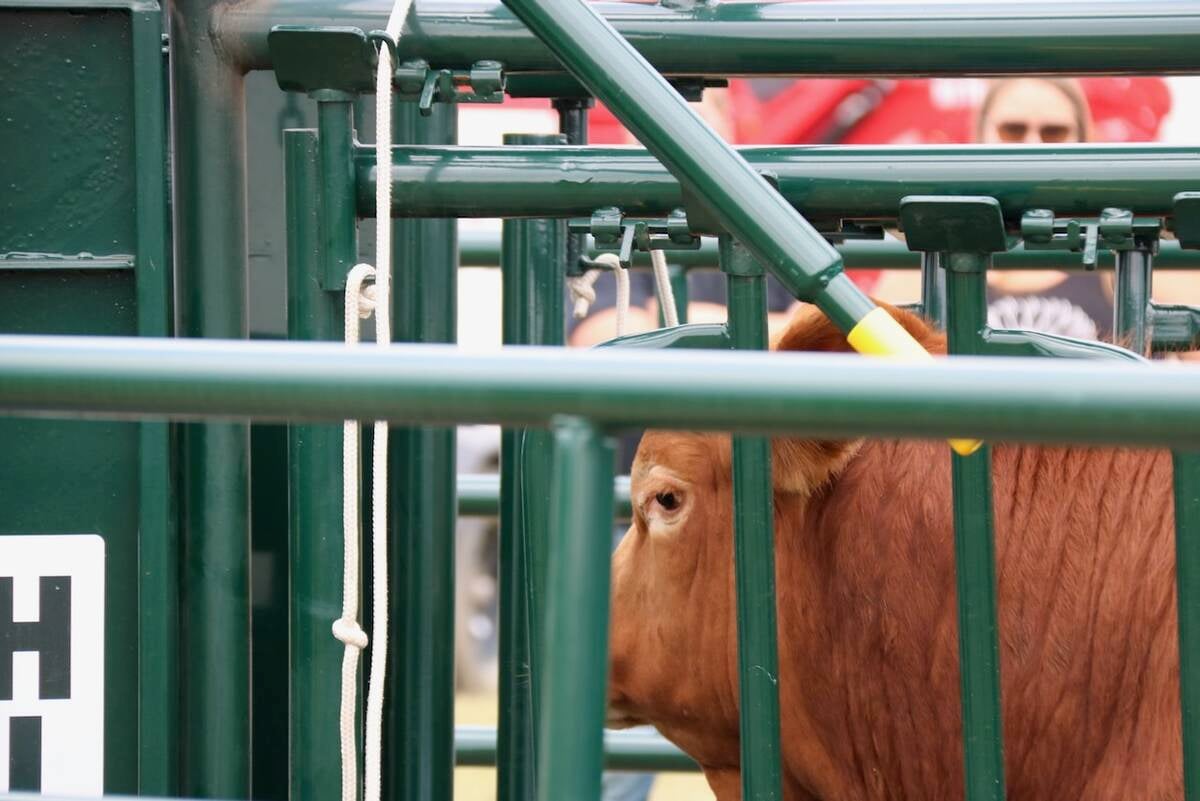
Good handling equipment a must on cattle operations
It’s important for the safety of producers and everyone else dealing with their stock that handling equipment is functional and safe.
The 20 organization network, which is using $19 million in federal funding over four years to study prions from scientific and social perspectives, has several mandates:
- Examine how prion proteins turn into disease.
- Identify cattle genes to assess BSE susceptibility or resistance.
- Eradicate chronic wasting disease.
- Develop a Canadian risk strategy for these diseases.
Great strides have been made since BSE was first documented in the United Kingdom in 1986, yet mysteries remain.
Much of the work is done with genetically modified mice receiving doses of BSE, CWD and the human forms of the disease to help scientists understand the prion structure in each of the affected species.
At the genetic level, scientists know the PrP gene encodes the prion protein, the disease-causing agents that reside in a misfolded protein form called PrPsc.
Neil Cashman of the University of British Columbia’s Brain Research Centre studies Creutzfeldt-Jakob and other human dementia diseases. His team is looking for therapies as well as an understanding of why proteins misfold and lead to brain diseases.
This is what they know: a body fighting bacteria or viruses forms antibodies to fight off the invaders, but for some reason the body does not produce antibodies against prion proteins.
Tests on live humans and animals are needed to diagnose these diseases without waiting for death.
One such project to test brain, blood and urine samples using acoustic waves is underway at the University of Guelph. This program assesses normal and abnormal prions with a specially designed acoustic sensor.
Normal prions are soluble while the misfolded prions are not, said engineering graduate student Angela Catford, who is working with scientist Gordon Hayward.
The work is still in the early stages, but Catford and Hayward have found that the two agents respond differently when hit with the acoustic waves.
Researchers have also tested urine and brain samples containing known positive and negative prions. Blood tests were less successful.
At the genetic level, researchers at the University of Alberta are looking for susceptibility or resistance factors.
“There is something going on in the PrP that affects susceptibility for want of a better word,” said researcher Steve Moore, who is part of the Alberta Prion Research Institute that was formed last year.
Brenda Murdoch, a doctoral candidate working with Moore, collected blood samples from hundreds of positive and negative cases from Great Britain for genetic assessment.
Cattle have about 30,000 genes so evaluation takes time.
Murdoch plans to isolate DNA from the blood of BSE cases and see if there is prion disease susceptibility or resistance. These samples were from Holstein cattle and many were half siblings.
Other research is looking for effective ways to destroy prions.
They are stable and difficult to inactivate, and researchers also know they can bind to clay and become even more infective.
As well, it is known that scrapie and CWD can be carried through environmental exposure and that microbes can destroy them.
Part of the research is looking at composting, alkaline and thermal hydrolysis or physical barriers such as what is used in water treatment plants to eliminate prions derived from CWD, BSE and scrapie cases.
Composting can reduce the volume of material but no one knows if the infectivity is stopped. Olds College in Olds, Alta., has devised a special apparatus to monitor aspects of composting and the degradation of the prions.
Agriculture Canada’s research centre in Lethbridge conducted a composting program on 16 steers. This year it will be allowed to add scrapie to the pile and monitor whether destruction occurs.
Alkaline and thermal hydrolysis is already commercially available so researchers in Lethbridge will also test to see how well it works.
Biochemists at the Vaccine and Infectious Disease Organization in Saskatoon are working to develop a BSE vaccine. Scott Napper of VIDO said the vaccine may not stop the disease but could perhaps postpone it.
To achieve protection, researchers need to find a way to prompt a strong immune response from the animal.
The facility will work on a specially selected flock of sheep born this month. The sheep will be infected with scrapie-infected brain tissue through the gut because that is the initial uptake of the disease.
They will also include animals already known to be genetically predisposed to the disease.



